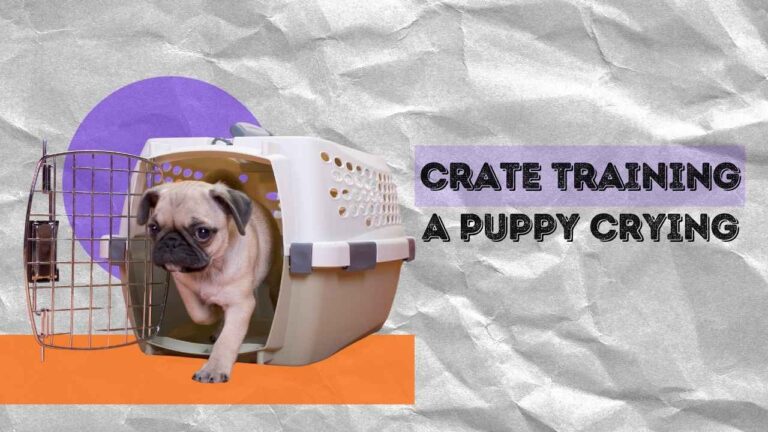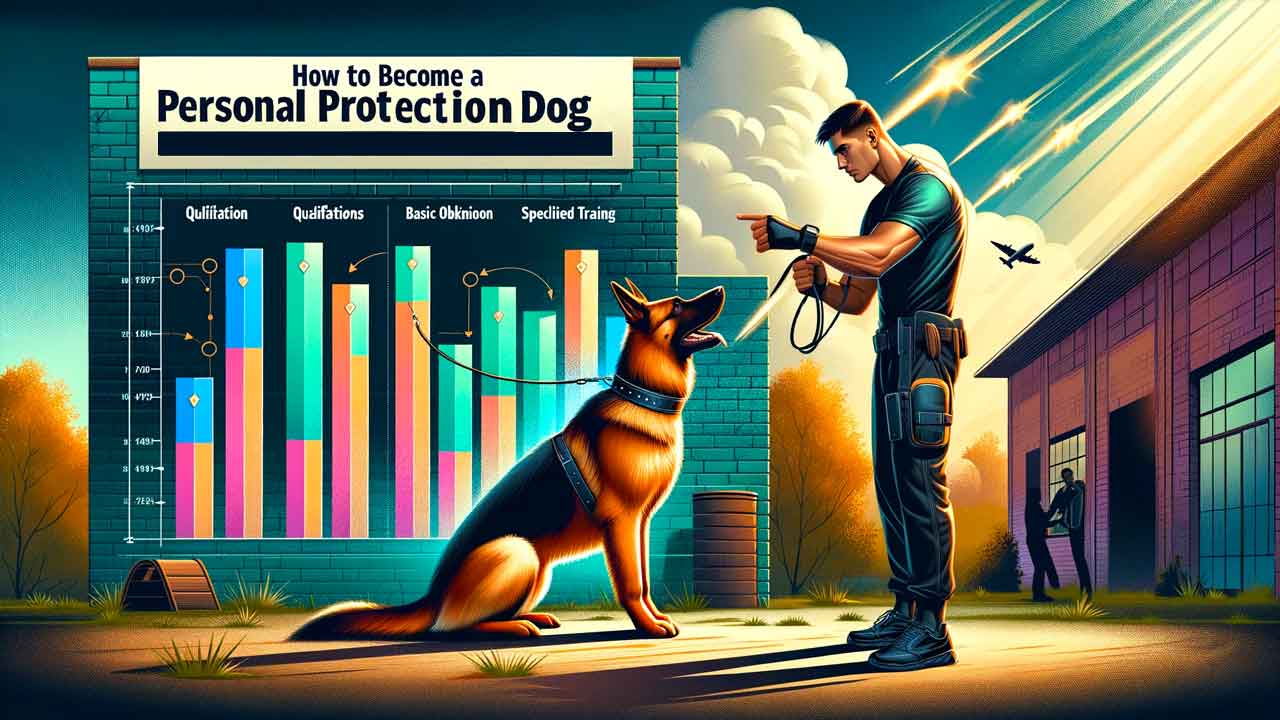How to Train a Dog to Ignore Distractions: Practical Tips
Key Insights
| Key Point | Description |
|---|---|
| Importance of Distraction Training | Essential for focus and obedience in various environments. |
| Common Distractions for Dogs | Includes people, animals, and environmental stimuli. |
| Benefits of Distraction Training | Enhances focus, safety, and behavioral control. |
| Understanding Your Dog's Distractions | Identifying triggers and signs of distraction. |
| Building a Foundation for Success | Establishing a bond and basic obedience training. |
| Introducing Distractions Gradually | Gradually increasing distraction difficulty with positive reinforcement. |
| Training Techniques for Common Distractions | Addressing specific distractions like people, animals, and environment. |
| Troubleshooting Common Challenges | Tackling leash reactivity, food distractions, and separation anxiety. |
| Tips for Success and Ongoing Training | Consistency, socialization, and seeking professional help when necessary. |
How to Train a Dog to Ignore Distractions?
To train a dog to ignore distractions, begin with a foundation of basic obedience training. This includes commands like ‘sit', ‘stay', ‘come', and ‘heel', which are essential for maintaining control and focus. Establish a strong bond and trust with your dog, as this enhances their willingness to follow your commands. Start training in a low-distraction environment to allow your dog to focus on your commands without being overwhelmed. Gradually introduce distractions, beginning with mild ones and slowly increasing the difficulty. Use positive reinforcement, such as treats or praise, to reward your dog for successfully ignoring distractions and focusing on you.
Effectiveness of Different Distraction Training Techniques for Dogs

The bar chart above visually represents the effectiveness of various distraction training techniques for dogs. Techniques like ‘Basic Obedience', ‘Leave It Command', ‘Heel Command', ‘Watch Me Command', and ‘Desensitization' are compared based on their hypothetical effectiveness percentages. The chart illustrates that while all these methods are effective to varying degrees, some techniques, like the ‘Watch Me Command', show higher effectiveness in training dogs to ignore distractions. This visualization helps in understanding the impact of different training methods on a dog's ability to stay focused amidst distractions.
Introduction
Training a dog to ignore distractions is an integral part of responsible dog ownership. Distractions can range from other animals and people to sudden noises or movements, and a dog's ability to stay focused despite these distractions is crucial for its safety and the safety of others. This article will delve into the importance of distraction training for dogs, the common distractions they face, and the benefits of training them to maintain their composure in various environments. We will explore practical steps and techniques to build a strong foundation for successful distraction training, helping your dog to remain calm and focused in any situation.
The Importance of Distraction Training for Dogs
Distraction training goes beyond basic obedience; it's about teaching your dog to maintain focus and control in an environment filled with potential distractions. This type of training is crucial not only for the dog's behavior and responsiveness but also for its overall safety. Dogs that can ignore distractions are less likely to engage in dangerous behaviors, such as chasing after a squirrel across a busy street or becoming overly agitated in public settings. Moreover, distraction training is essential for dogs in urban environments, where the likelihood of encountering various stimuli is high. It ensures that your dog can navigate these settings calmly and obediently, making outings more enjoyable and stress-free for both the dog and the owner.
Common Distractions for Dogs
Dogs, with their heightened senses, can be distracted by a myriad of stimuli. Common distractions include other animals, people, especially children or people with unusual attire or behavior, moving vehicles, loud noises like construction sounds or sirens, and even floating debris like leaves or plastic bags. These distractions can trigger a dog's natural instincts, such as the prey drive, curiosity, or even fear. Understanding what specifically captures your dog's attention is crucial in developing a training plan to help them learn to ignore these distractions. It's also important to note that distractions can vary depending on the dog's breed, age, and individual personality.
Benefits of Training a Dog to Ignore Distractions
Training your dog to ignore distractions offers numerous benefits. Firstly, it enhances the dog's focus, allowing it to pay attention to your commands even in a distracting environment. This level of focus is essential for effective communication between you and your dog. Secondly, it significantly increases safety. A dog that remains calm and focused is less likely to bolt into traffic, engage in fights with other animals, or jump on people. Thirdly, it promotes better behavioral control. Dogs trained to ignore distractions are generally calmer and less prone to reactive behaviors. Lastly, it enhances the quality of life for both the dog and the owner. Walks, outings, and even daily life become more enjoyable and less stressful when your dog is well-behaved and attentive.
Understanding Your Dog's Distractions
Identifying Your Dog's Individual Triggers
The first step in training your dog to ignore distractions is to understand what specifically distracts them. This requires observation and understanding of your dog's behavior in various settings. Triggers can be anything from visual stimuli like moving objects or other animals, to auditory stimuli such as loud noises or unusual sounds. Some dogs may be more sensitive to certain types of stimuli based on their breed, past experiences, or natural temperament. For example, a herding breed may be more reactive to moving objects, while a hunting breed may be more distracted by scents. Identifying these triggers will help you tailor your training approach to address your dog's specific needs and challenges.
For those interested in specialized training, such as teaching a dog to detect gluten, our guide on How to Train a Gluten Detection Dog provides detailed insights.
Recognizing Signs of Distraction in Your Dog
Recognizing the signs that your dog is becoming distracted is key to effective training. Common signs include breaking eye contact, pulling on the leash, barking, whining, or physically trying to move towards the distraction. Some dogs may show more subtle signs such as heightened alertness, pricked ears, or a change in body posture. By learning to recognize these signs, you can intervene early and guide your dog back to a focused state. This proactive approach is crucial in teaching your dog to manage their reactions to distractions.
Differentiating Between Fear and Excitement
It's also important to differentiate between a dog's reaction to distractions out of fear or excitement. A dog that is excited by a distraction may show behaviors such as wagging its tail, jumping, or playful barking. In contrast, a dog reacting out of fear may exhibit signs such as cowering, tucking its tail, or growling. Understanding the motivation behind your dog's reaction to distractions will inform your training approach. Fear-based reactions require a different training strategy, often involving desensitization and counterconditioning, compared to training a dog that is overly excited by distractions.
Building a Foundation for Success
A strong foundation is crucial for successful distraction training. This involves establishing a solid bond with your dog and implementing basic obedience training.
Establishing a Strong Bond with Your Dog
A strong bond between you and your dog is the cornerstone of effective training. This bond is built on trust, mutual respect, and understanding. Spend quality time with your dog, engage in activities they enjoy, and ensure they feel safe and secure in your presence. A dog that trusts and respects its owner is more likely to respond positively to training and be motivated to please.
Implementing Basic Obedience Training
Basic obedience training lays the groundwork for distraction training. This includes teaching your dog fundamental commands such as sit, stay, come, heel, and leave it. These commands are essential tools in managing your dog's behavior and maintaining control in distracting situations. Ensure that your dog has a solid understanding of these commands in a distraction-free environment before introducing them to more challenging settings.
Creating a Positive and Distraction-Free Training Environment
Start your training in an environment with minimal distractions. This could be a quiet room in your house, your backyard, or any place where you can control the level of stimuli. A positive and distraction-free environment allows your dog to focus on the training without being overwhelmed by external stimuli. Use positive reinforcement techniques, such as treats or praise, to encourage and reward desired behavior. This approach not only makes training more enjoyable for your dog but also strengthens your bond.
If you're curious about the costs associated with other forms of specialized dog training, like K9 training, learn more from our article on K9 Dog Training Costs.
Introducing Distractions Gradually
Once your dog is comfortable with basic obedience commands in a controlled environment, gradually introduce distractions. This should be done in a systematic and incremental manner to avoid overwhelming your dog.
Starting with Mild Distractions and Gradually Increasing the Difficulty
Begin with mild distractions that your dog can easily ignore, such as a toy placed at a distance or a person walking by. As your dog becomes more proficient at maintaining focus amidst these mild distractions, gradually increase the difficulty. This could involve introducing more challenging distractions, such as other animals, louder noises, or moving vehicles. The key is to progress at a pace that is comfortable for your dog, allowing them to build confidence and success at each level.
Using Positive Reinforcement to Reward Desired Behavior
Positive reinforcement is crucial in distraction training. Whenever your dog successfully ignores a distraction and follows your command, reward them with a treat, praise, or a favorite toy. This reinforcement makes the training experience positive and motivates your dog to repeat the desired behavior. It's important to time the rewards correctly; reward your dog immediately after they display the correct behavior to ensure they make the connection between their action and the reward.
Avoiding Punishment or Negative Reinforcement
Avoid using punishment or negative reinforcement in distraction training. This includes yelling, harsh corrections, or physical punishment. Negative reinforcement can lead to fear, anxiety, and a lack of trust, which are counterproductive to training. It can also exacerbate the problem by making your dog more reactive to distractions. Instead, focus on positive reinforcement and redirecting your dog's attention away from the distraction.
Common Distractions and Training Techniques
Different distractions require specific training techniques. Here's how to address common distractions:
Addressing People Distractions: Training the “Leave It” Command and Practicing Around People
People can be a major distraction for dogs, especially in busy environments like parks or city streets. To address this, train your dog to respond to the “leave it” command. This command teaches your dog to disengage from the distraction and focus on you. Practice this command in controlled settings first, then gradually introduce scenarios with more people. Reward your dog for ignoring people and focusing on you.
Managing Animal Distractions: Using Desensitization and Counterconditioning Techniques
Animal distractions, especially other dogs, can be challenging for many dogs. Desensitization and counterconditioning are effective techniques to manage this. Desensitization involves exposing your dog to other animals at a distance where they feel comfortable and gradually decreasing the distance as they become more desensitized. Counterconditioning involves changing your dog's emotional response to the distraction. This is done by associating the presence of other animals with positive experiences, such as receiving treats or praise.
Overcoming Environmental Distractions: Training the “Watch Me” Command and Practicing in Different Settings
Environmental distractions like traffic noise or moving objects can be addressed by teaching the “watch me” command. This command directs your dog’s attention back to you, away from the distraction. Begin practicing this in a quiet environment, and gradually move to more challenging settings as your dog improves. Consistent practice in diverse environments, such as parks, urban areas, and busy streets, will help your dog learn to stay focused despite external distractions.
raining a hunting dog presents unique challenges and costs. Explore our comprehensive guide on Training a Hunting Dog Costs for more information.
Troubleshooting Common Challenges
Addressing Leash Reactivity: Training the “Heel” Command and Practicing in Controlled Environments
Leash reactivity is a common challenge where dogs become overly excited or aggressive while on a leash. Training the “heel” command is effective for managing this. The command teaches your dog to walk calmly by your side. Practice this in a controlled environment first, then gradually introduce situations with more distractions. Consistent reinforcement of the “heel” command helps your dog learn appropriate leash behavior.
Managing Food-Related Distractions: Using High-Value Treats and Practicing in Distraction-Free Areas
For food-motivated dogs, managing food-related distractions is crucial. Use high-value treats as rewards for ignoring food distractions. Start training in a distraction-free area, then gradually introduce food distractions. Consistently rewarding your dog for ignoring the distractions and focusing on you will help reinforce the desired behavior.
Overcoming Separation Anxiety: Providing Comfort Toys and Practicing Short Departures
Separation anxiety can manifest as destructive behavior or excessive barking when left alone. To help your dog overcome this, provide comfort toys that keep them engaged. Start with short departures and gradually increase the duration. This gradual approach helps your dog become comfortable with being alone and reduces anxiety.
Looking for breed-specific training tips? Check out our guide on How to Train a Dogo Argentino, which offers tailored advice for this breed.
Tips for Success and Ongoing Training
Maintaining Consistency and Patience Throughout the Training Process
Consistency and patience are key to successful distraction training. Maintain a regular training schedule and be patient with your dog’s progress. Understand that training is a gradual process and each dog learns at their own pace.
Socializing Your Dog to Different Environments and Distractions
Socialization is crucial in distraction training. Expose your dog to various environments and distractions, allowing them to become accustomed and less reactive. This exposure helps your dog become more adaptable and less likely to be overwhelmed by new stimuli.
Seeking Professional Help if Needed
If you encounter persistent challenges in distraction training, don’t hesitate to seek professional help. A professional dog trainer or behaviorist can provide personalized guidance and support, ensuring effective training for your dog.
Interested in becoming a professional dog trainer? Discover the pathway and requirements in our article Becoming a Dog Trainer in Missouri.
Conclusion
Training a dog to ignore distractions is an essential part of responsible dog ownership. By understanding your dog’s distractions, building a solid foundation, introducing distractions gradually, and addressing specific challenges, you can effectively train your dog to remain focused and well-behaved in various environments. Remember, patience, consistency, and positive reinforcement are crucial throughout this process. For further information and resources on distraction training, consult professional dog training organizations and experts.
For information on the costs involved in different types of dog training, such as protection training, visit our page on Dog Protection Training Cost.







